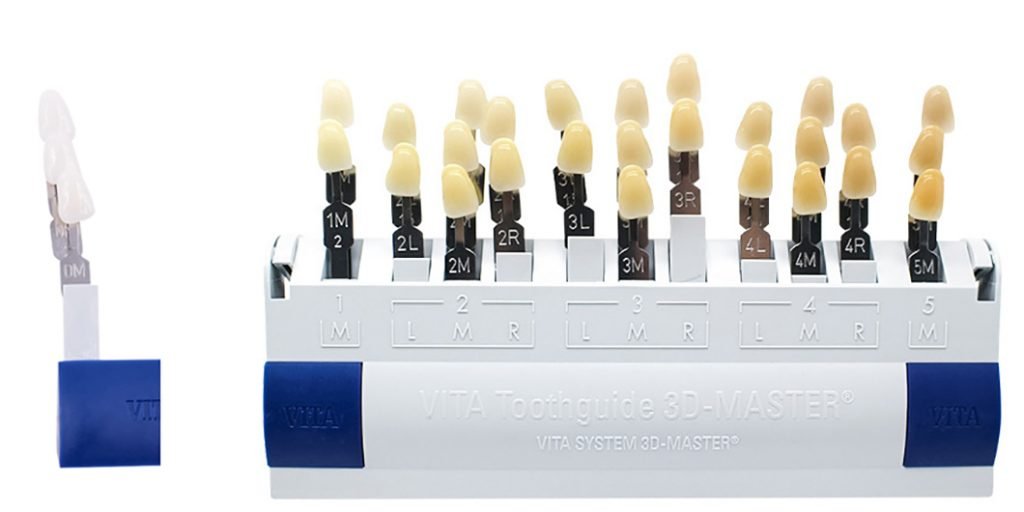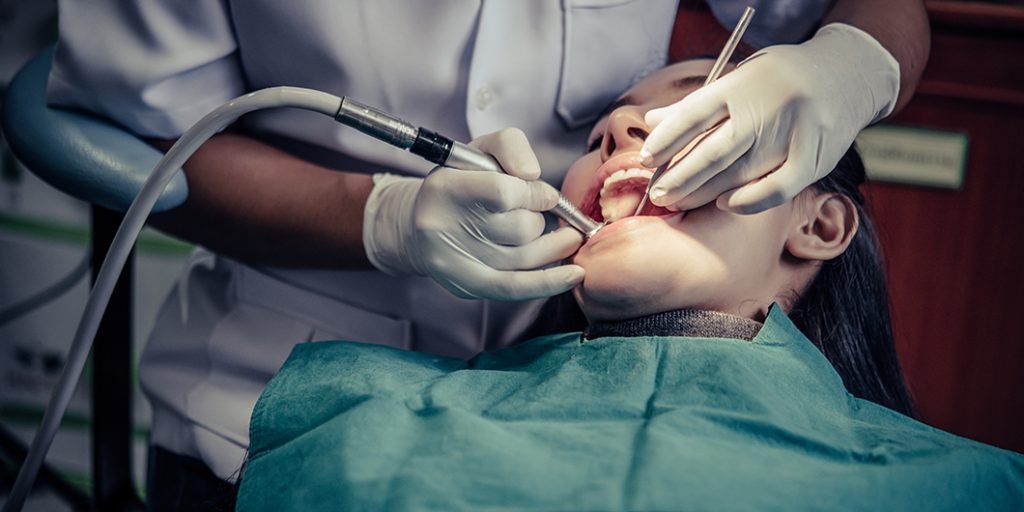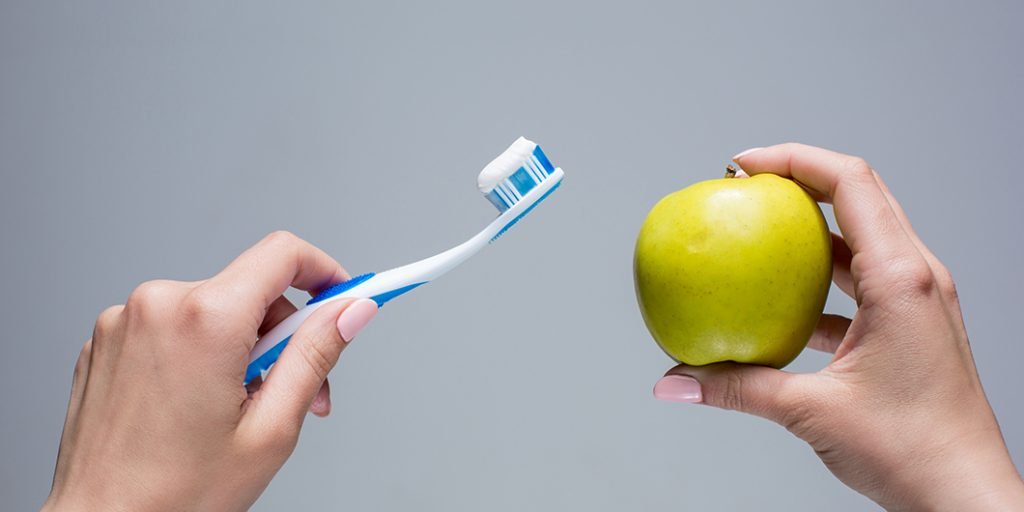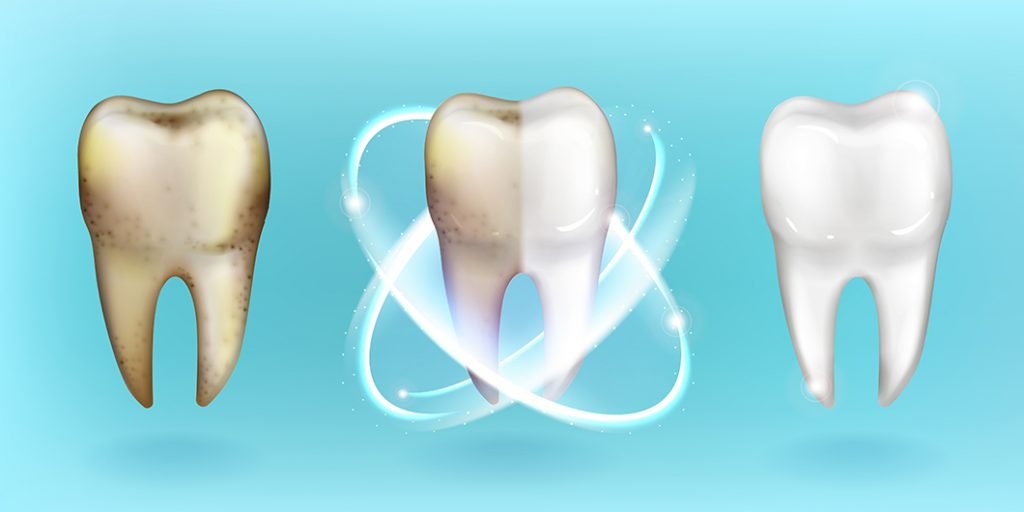
In life, people often see advertisements for whitening toothpaste, but they do not believe that their teeth can be as white as described in the advertisements because they are doubtful of the efficacy of whitening toothpaste in the market, and prefer to go to professional clinics for teeth whitening.
1) Tooth whitening is a consistent demand from consumers, why?
- A brighter smile,
- Feel more confident,
- Look younger, etc.
2) Why can’t the whitening toothpaste on the market achieve the whitening effect you want?
In fact, whitening toothpaste really has the effect of whitening your teeth, but it does not achieve the kind of Hollywood effect you want.
Whitening toothpaste usually contains either abrasives or peroxides, or both, and whitening toothpaste mainly whitens teeth through these two kinds of ingredients.
However, both the United States and Europe have restrictions on the number of abrasives and peroxides in whitening products, which results in limited tooth whitening results.
3) What can whitening toothpaste really achieve?
Whitening toothpaste can generally lighten the color of teeth by about one to two shades.

Limitation of abrasives in whitening toothpaste
What are abrasives?
Abrasives in toothpaste, for example, calcium carbonate or hydrated silica, can gently polish the teeth.
How do I use it?
If used twice a day, whitening toothpaste generally takes two to four weeks to make teeth look whiter. Whitening toothpaste is generally safe for daily use, but overuse may damage tooth enamel.
What is the limitation of abrasives?
RDA (Relative dentin abrasivity) is a measure of the erosive effect of abrasives in toothpaste on dentin.
The RDA tells how hard your toothpaste is.
All dentifrices with the ADA (American Dental Association) Seal of Acceptance must have an RDA of 250 or less.
| 0-70 | low abrasive | sodium bicarbonate: 10, silica: 50 |
| 70-100 | medium abrasive | this is mid-range abrasion, standard toothpaste: 70-90 |
| 101-150 | highly abrasive | calcium carbonate: 110 (max) |
| 151-250 | regarded as a harmful limit | This is considered harmful to the teeth, FDA recommended limit: 200 ADA recommended limit: 250 |
Furthermore, there is a toothpaste abrasion chart, which lists the abrasion values of some common brands of toothpaste for your reference, and is available for free download here.
Restriction of peroxide in whitening toothpaste
In the United States
The categorization of whitening products depends on the ingredients in the formulation.
The FD&C Act defines cosmetics by their intended use, as “articles intended to be rubbed, poured, sprinkled, or sprayed on, introduced into, or otherwise applied to the human body…for cleansing, beautifying, promoting attractiveness, or altering the appearance” (FD&C Act, sec. 201(i)).
But, if the product is intended for therapeutic use, such as treating or preventing disease, or to affect the structure or function of the body, it’s a drug (FD&C Act, 201(g)), or in some cases a medical device (FD&C Act, 201(h)), even if it affects the appearance.
Want to see more? Please click this jump link.
The FDA regulates most peroxide-containing tooth whitening products as cosmetics unless they contain fluoride or other active ingredients.
Cosmetics belong to the VCRP (Voluntary Cosmetic Registration Program) and don’t require FDA registration.
If a whitening product is regulated as a drug, both companies, the manufacturer and the distributor, will have to register with FDA, but only one company needs to list, depending on who is marketing the drug. The listing will generate an NDC number.
In Europe
Whitening products are classified as cosmetics or medical devices, depending on the amount of hydrogen peroxide in the whitening product.
Tooth whitening products are classified as cosmetics in the EU and have to comply with the Cosmetics Regulation (EC) 1223/2009.
The active ingredient in most whitening products is hydrogen peroxide (H2O2) which is delivered as hydrogen peroxide or carbamide peroxide.
- Carbamide peroxide, also called urea peroxide, is a stable complex that breaks down in contact with water to release hydrogen peroxide.
- CH6N2O3 + H2O = C(NH2)2 + 2H2O2
- Hydrogen peroxide is an unstable complex.
- Carbamide peroxide releases hydrogen peroxide, which is the chemical ingredient in most toothpaste that whiten teeth.
Two restrictions are specified on pages 145 and 146 of the Cosmetics Regulation (EC) 1223/2009
1 Oral products, including mouth rinse, toothpaste, and tooth whitening or bleaching or bleaching products ≤ 0.1% of hydrogen peroxide (present or released).
2 Tooth whitening or bleaching products with between 0.1% and 6% of hydrogen peroxide (present or released) can be only sold to dental practitioners.2.1 The product label has to indicate the concentration of hydrogen peroxide present or released indicated in percentage.
Want to see page 145 and page 146? Please click and download.
2.2 Not to be used on a person under 18 years of age.
2.3 To be only sold to dental practitioners. For each cycle of use, the first use to be only done by dental practitioners or under their direct supervision if an equivalent level of safety is ensured.
2.4 Afterward to be provided to the consumer to complete the cycle of use.
If you sell products with greater than 6% hydrogen peroxide, you have to classify your products as medical devices under the Medical Device Directive 93/42/EEC1.
Although products with high concentrations of hydrogen peroxide (i.e., greater than 6%) generally produce excellent results with few complications, they are usually administered under the supervision of a dental professional.
In the U.K.
The supply of any cosmetic whitening product that contains more than 0.1% hydrogen peroxide is classified as a punishable offense.
Ironically, in the E.U., the governments clearly have not chosen to restrict firms from marketing high-peroxide content whitening gels. Further, since there are no documented enforcement cases regarding actions against violative dental whitening gels in the U.K. As a result, there are many dental whitening products (with as much as 35% hydrogen peroxide) that are readily available in the E.U. and even within the U.K.
Teeth whitening is any process that can lighten the color of your teeth.
Whitening can be achieved by the physical removal of stains or chemical reactions to lighten the color of the teeth.
(1) Bleaching is defined here as the chemical degradation of pigment.
- The most common ingredients used in bleaching is hydrogen peroxide (H2O2), which is available as hydrogen peroxide or carbamide peroxide,
- and whitening gel contains sodium hypochlorite.
(2) Whitening products with abrasives, which is defined as the physical removal of stains
For example, calcium carbonate, silicon dioxide
Whitening systems can be classified in a variety of ways.
The following methods are based on the ADA.
(In-office) dental bleaching,
This provides higher concentrations of peroxide than OTC (over-the-counter) drugs.
Some professionals use laser systems to increase the speed of the chemical reaction.
The results of teeth whitening can be seen after 30 to 60 minutes of treatment. More dramatic results can be obtained with multiple applications.

(At-home) bleaching gel and tray
Available both professionally and OTC.
The bleaching gel is a peroxide-based gel that is brushed directly onto the tooth surface with a small brush or a small applicator.
This method involves the use of a fitted tray worn for 2 to 4 hours a day or overnight.
In a few days, lightening the teeth by 1 or 2 shades.
Cosmetics and OTC whitening products
Whitening toothpaste
This usually contains more abrasives and detergents than standard toothpaste, which can remove more stubborn stains.

The most common ingredients used in whitening toothpaste are hydrogen peroxide and carbamide peroxide, which are used at different concentrations.
- with 0.1% of Hydrogen peroxide (present or released) or less
- safe and effective
- strong oxidizing agents
- it is believed that reactive oxygen molecules (generated from hydrogen peroxide) interact with organic chromophores within enamel and dentin.
The peroxide level is so low that it is unlikely to remove any of the intrinsic tooth discolorations, so some users will be disappointed, depending on precisely why the teeth are unsightly
Used continuously for one month, this typically can lighten tooth color by about one or two shades.
Whitening strips & gels
Introduced into the market in the late 1980s
A thin layer of peroxide gel is applied to a plastic strip that is shaped to fit the buccal surface of the teeth
Regular Package: 14 teeth whitening strip treatments, each with 1 upper and 1 lower strip. Apply once a day for 30 minutes
- tear open the sachet, then apply to your teeth,
- letting the gel rest on your teeth for 10 minutes,
- Use once a day for 10 minutes.
Used continuously for 14 days, this could lighten the teeth by 1 or 2 shades.
Rinses or mouthwash
Whitening rinses or mouthwash contain oxygen sources such as hydrogen peroxide to react with the chromogens.
Use twice a day, vigorously swish 10 ml (2 teaspoonfuls) of rinse between your teeth for 60 seconds and then spit out
It takes up to 3 months to see a 1 or 2 shade improvement in tooth color.
Chewing gums
Paint-on films
Types of whitening toothpaste
- Bleaching agents (or peroxides), which react with stains to lighten the color,
- Cleaners, such as smoker’s toothpaste, which contain lots of detergents and abrasives to help remove the stain from the tooth surface,
- or whitening toothpaste contained both cleaning and bleaching ingredients
- More severe or complex stains are best lightened by a professional, while cosmetics and OTC whitening toothpaste can be used for less severe cases.

Causes of tooth discoloration
These can be divided into two main categories: intrinsic stains and extrinsic stains
Intrinsic stains
Genetic, age, antibiotic, caries, amalgam restorations, and pulpal hemorrhage, decomposition, or necrosis.
Extrinsic stains
Smoking, metal salts (such as iron or copper), highly pigments in drinks and food (such as dark fruits, coffee, cola).

Risks of Teeth Whitening
Common risks associated with teeth whitening include increased tooth sensitivity and minor gum irritation.
The extent of these side effects is directly related to the concentration of peroxide contained, the duration of treatment, and the non-peroxide ingredients contained in the product.
Some very aggressive treatment options can damage teeth by dehydrating and demineralizing them to make them temporarily look whiter.
What are your feelings and thoughts? Don’t hesitate to write them down!



